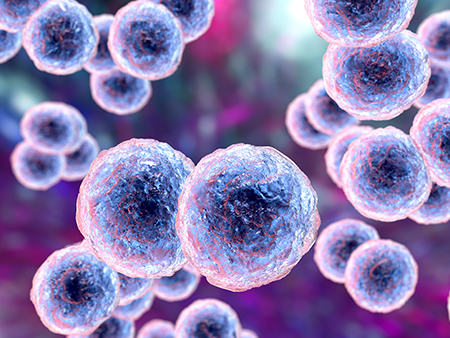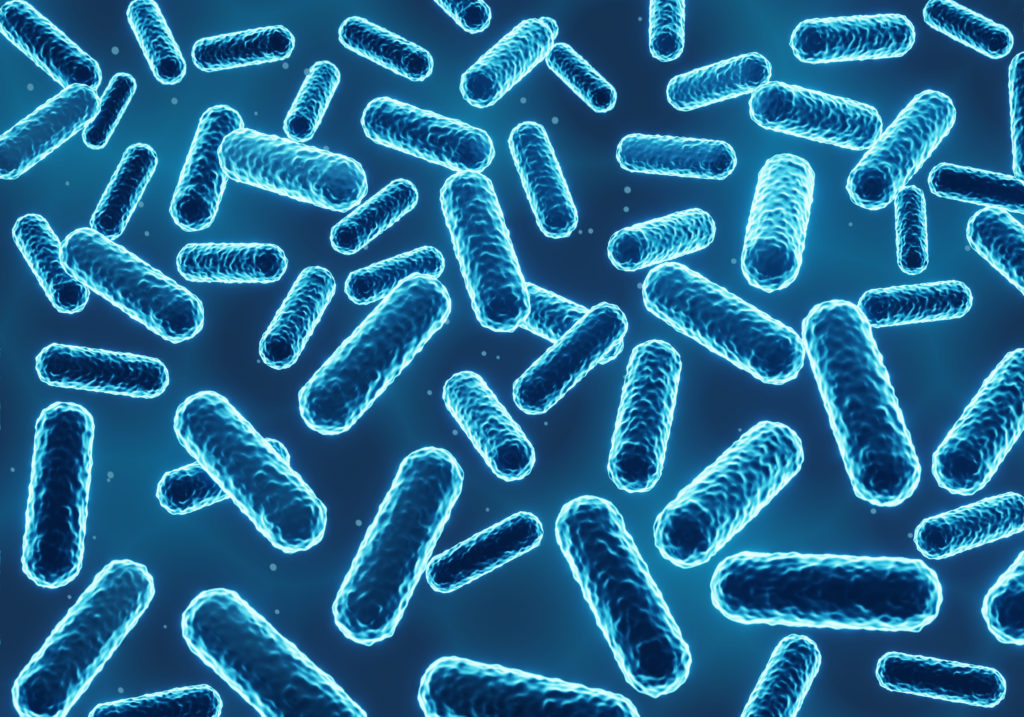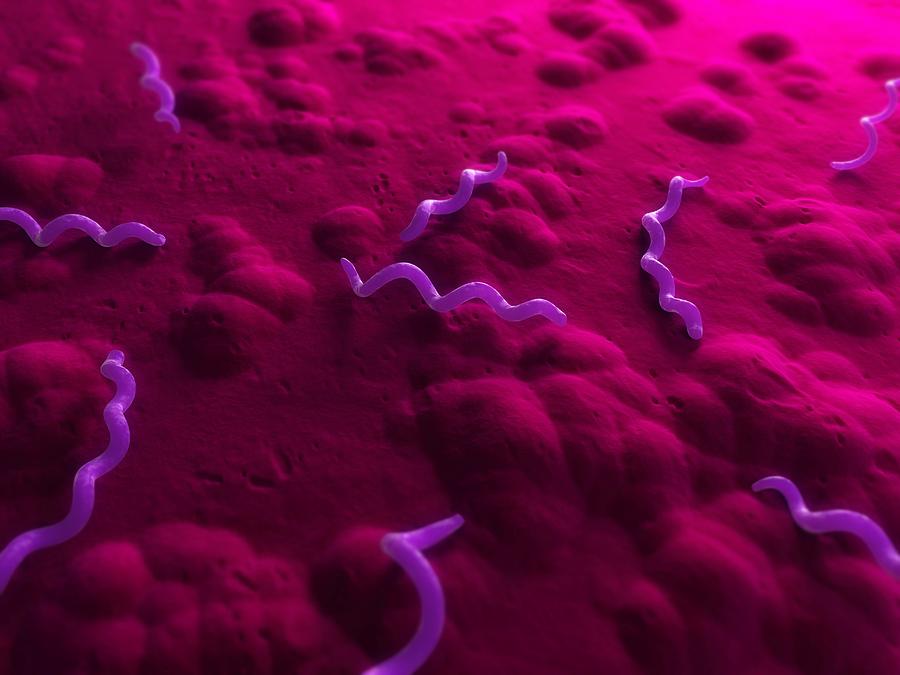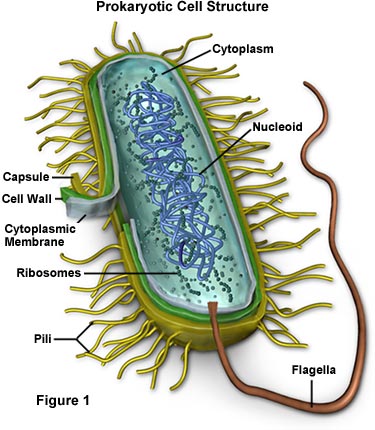Bacteria are small, single-celled organisms that can be found in large numbers in all environments, both within and outside of other organisms. Some bacteria are pathogenic, but the majority are beneficial. They are utilized in industrial and therapeutic activities, and they support many forms of life, both plant and animal.
Bacteria are supposed to be the earliest species to appear on the planet, which happened roughly 4 billion years ago. Bacteria-like creatures are the oldest known fossils.
Bacteria can eat most organic and inorganic materials, and some can even thrive in harsh environments. A increasing interest in the gut microbiome’s function is revealing new insight on the importance of bacteria in human health.
Overview of Bacteria
Bacteria are a group of microorganisms that belong to the Bacteria domain. Bacteria and Archaea were originally classed together in the Kingdom Monera, but because to distinctions in genetic and morphological traits, both classifications are now regarded different domains. Bacteria, Archaea, and Eukarya are the three different domains that are currently utilized to organize living organisms.
Extremophiles are unicellular creatures that exist in situations with extreme temperatures, high salinity, or in certain compounds where most other species would perish. Archaea contains extremophiles. Eukarya creatures have true nuclei in their cells and are unicellular or multicellular. Protists, fungi, plants, and animals are among these creatures.
Bacteria are prokaryotes, which means their DNA (deoxyribonucleic acid) isn’t enclosed within a nucleus because they don’t have one. Bacteria are minuscule, which means they are invisible to the naked sight. To give you a sense of scale, bacteria are typically one micron in length or circumference, depending on the morphology of the bacteria. A micron is a millionth of a meter, and the smallest unicellular eukaryotes (including protists like Plasmodium and Euglena) are typically between 10 and 100 microns in size.
Bacteria are also unicellular, meaning that each bacteria is made up of only one cell. Bacteria can be found in geothermal vents deep within the ocean and also on skin surface of most animals due to their microscopic size.
Bacteria are single-celled organisms that do not belong to either the plant or animal kingdoms. They are normally only a few micrometers long and live in groups of millions.
In most cases, a gram of soil contains around 40 million bacterial cells. A million bacterial cells can be found in a milliliter of fresh water. Bacteria are expected to make up a large portion of the earth’s biomass, with an estimated 5 billion bacteria on the planet.
Types of Bacteria
Bacteria come in a variety of shapes and sizes. Shape is one way to categorize them. There are three primary shapes to be aware of.
1. Spherical; Cocci are bacteria that are formed like a ball, and a coccus is a single bacterium. The streptococcus group, which causes “strep throat,” is an example.

2. Rod shaped; Bacilli are rod-shaped organisms (singular bacillus). Some bacteria have a curved form. These are referred to as vibrio. Bacillus anthracis (B. anthracis), sometimes known as anthrax, is an example of a rod-shaped bacteria.

3. Spiral; Spirilla is the name given to these spirals (singular spirillus). Spirochetes are organisms that have a very tight coil. Bacteria of this form cause leptospirosis, Lyme disease, and syphilis.

Within each shape group, there are numerous variations.
Structure of Bacteria
Plant and animal cells are not the same as bacterial cells. Bacteria are prokaryotes, meaning they are devoid of a nucleus.
A bacterial cell consists of the following components:
- Capsule: A layer present on the outside of some bacteria’s cell walls.
- Cell wall: The cell wall is a layer made up of peptidoglycan, a polymer. The bacteria’s form is determined by the cell wall. It’s found on the exterior of the plasma membrane. Gram positive bacteria have a thicker cell wall than Gram negative bacteria.
- The plasma membrane; This is found within the cell wall, is responsible for generating energy and transporting molecules. Permeability refers to the ability of substances to pass through the membrane.
- Cytoplasm is a gelatinous substance that includes genetic material and ribosomes and is found inside the plasma membrane.
- DNA: This is where all of the genetic instructions for the bacterium’s development and function are stored. It’s found within the cytoplasm.
- Ribosomes are the structures that produce or synthesis proteins. Ribosomes are RNA-rich granules that form a complex particle.
- Flagellum: This is a structure that allows bacteria to move about and push themselves. Some bacteria can have many copies of themselves.
- Pili: The exterior of the cell has hair-like extensions that allow it to attach to surfaces and transfer genetic material to neighboring cells. This has the potential to contribute to the spread of disease in humans.

What are Characteristics of Bacteria?
Bacteria are prokaryotes without a nuclear envelope, hence their DNA is found floating in the cytoplasm. Bacteria are classed based on their morphology and how they react in the laboratory when stained with the Gram stain. Bacteria can be classified as Gram-positive or Gram-negative. Due to their thin peptidoglycan layer and outer lipid layer, Gram-negative bacteria do not react to the Gram stain. Gram-positive bacteria stain because their peptidoglycan layer is thicker and their outer lipid layer is absent.
A plasma membrane is present in all bacteria, and some bacteria have projections on the outside of their bodies, such as flagella or cilia. Depending on the structure and type of bacteria, they may aid motility. Most bacteria have cell walls, just like plant cells. The cell walls provide support and contribute to the cell’s structure and shape.
Nutrition
Bacteria can be fed in a variety of ways. Heterotrophic bacteria, often known as heterotrophs, obtain their energy by feeding on organic carbon. Dead biological material, such as rotting flesh, is absorbed by the majority of them. Some of these parasitic microorganisms are harmful to their hosts, while others are beneficial.
Autotrophic bacteria (or simply autotrophs) produce their own food in one of two ways: Photosynthesis (using sunlight, water, and carbon dioxide) and chemosynthesis (using carbon dioxide, water, and compounds like ammonia, nitrogen, sulfur, and others).
Photoautotrophs are bacteria that use photosynthesis to survive. Some microbes, such as cyanobacteria, create oxygen. These most likely played a key role in the production of oxygen in the earth’s atmosphere. Heliobacteria, for example, do not create oxygen.
Chemoautotrophs are organisms that use chemosynthesis. These bacteria are found in alfalfa, clover, peas, beans, lentils, and peanut roots, as well as in ocean vents.
Habitat
Bacteria may survive in harsh conditions like glaciers. Bacteria can be found in soil, water, plants, animals, radioactive waste, deep inside the earth’s crust, polar ice and glaciers, and hot springs, to name a few places. Bacteria can be found in the stratosphere, which is between 6 and 30 miles above sea level, and in the ocean depths, which can reach 32,800 feet or 10,000 meters.
Aerobes, also known as aerobic bacteria, can only thrive in the presence of oxygen. Corrosion, fouling, water quality issues, and poor odors are just a few of the issues that some types might create in the human environment. Anaerobes, often known as anaerobic bacteria, can only develop in the absence of oxygen. This is usually seen in the gastrointestinal tract in humans. Gas, gangrene, tetanus, botulism, and the majority of dental infections that they can cause.
Facultative anaerobes, or facultative anaerobic bacteria, may exist in either oxygen-rich or oxygen-depleted conditions, but they prefer the latter. They’re typically present in soil, water, vegetation, and some human and animal flora. Salmonella is an example.
Mesophiles, also known as mesophilic bacteria, are the bacteria that cause the majority of human diseases. Temperatures around 37°C are ideal for them. This is the human body’s temperature. Listeria monocytogenes, Pesudomonas maltophilia, Thiobacillus novellus, Staphylococcus aureus, Streptococcus pyrogenes, Streptococcus pneumoniae, Escherichia coli, and Clostridium kluyveri are only a few of the bacteria that can cause food poisoning.
Beneficial mesophilic bacteria, such as dietary Lactobacillus acidophilus, are found in the human intestinal flora, or gut microbiome.
Extremophiles, also known as extremophilic bacteria, may survive in settings that are too harsh for most living things.
Thermophiles may survive in temperatures as high as 75 to 80 degrees Celsius, whereas hyperthermophiles can survive in temperatures as high as 113 degrees Celsius.
Bacteria thrive in absolute darkness near thermal vents deep in the ocean, where both temperature and pressure are high. They produce their own food by oxidizing sulfur from deep inside the soil.
Other extremophiles include:
- Halophiles: found only in a salty environment
- Acidophiles: some of which live in environments as acidic as pH 0
- Alkaliphiles: living in alkaline environments up to pH 10.5
- Psychrophiles: found in cold temperatures, for example, in glaciers.
Transformation and Reproduction
Bacteria can multiply and alter in a variety of ways, including:
Binary fission
This is an asexual mode of reproduction in which a cell develops until a new cell wall grows through the center, resulting in the formation of two cells. These split apart, resulting in two cells that share the same genetic material.
Genetic material transfer
Cells gain new genetic material by conjugation, transformation, or transduction processes. Bacteria can become stronger and more resistant to dangers such as antibiotic medicines as a result of these processes.
Spore Formation
When bacteria are starved for nutrients, they can generate spores. Spores contain the organism’s DNA and the enzymes required for germination. They are extremely resistant to the effects of the environment. Until the appropriate conditions are met, the spores can remain dormant for centuries. They can then reawaken and turn into bacteria. UV and gamma radiation, desiccation, hunger, chemical exposure, and temperature extremes are all examples of environmental stress that spores can withstand.
Endospores, or internal spores, are produced by some bacteria, whereas exospores, or external spores, are produced by others. An example of an endospore-forming bacterium is Clostridium.
Uses of Bacteria
Bacteria are typically assumed to be harmful, but many of them are beneficial. We wouldn’t exist if it weren’t for them. Bacteria are most likely responsible for the oxygen we breathe.
1. Human survival is possible
Many microorganisms in the human body play a crucial role in survival. In the digestive system, bacteria break down nutrients like complex carbohydrates into forms that the body can utilize.
Non-pathogenic bacteria also aid in disease prevention by occupying areas where pathogenic, or disease-causing, bacteria would like to attach. By combating pathogens, some microorganisms protect us from disease.
2. Fixation of Nitrogen
Bacteria absorb nitrogen and release it when they die, which is then used by plants. Plants require nitrogen in the soil to survive, yet they are unable to produce it. To make certain of this, many plant seeds contain a small container of bacteria that is employed when the plant emerges.
3. Food Technology
Bacteria are used in the production of cheese. Lactic acid bacteria, such as Lactobacillus and Lactococcus, are used to make cheese, soy sauce, natto (fermented soy beans), vinegar, yogurt, and pickles, as well as yeast and molds, or fungi.
Fermentation is not only important for preserving foods, but it may also have health advantages. Some fermented meals, for example, include bacteria that are comparable to those associated with gastrointestinal health. Some fermentation processes produce novel chemicals, such as lactic acid, that have anti-inflammatory properties.
To validate the health advantages of fermented foods, more research is needed.
4. Bacteria in the Industry and in Research
Bacteria have the ability to degrade organic molecules. This is useful for tasks like waste processing and oil spill and toxic waste cleanup. Bacteria are used in the pharmaceutical and chemical sectors to make specific compounds.
Because bacteria can grow quickly and are relatively easy to manipulate, they are utilized in molecular biology, biochemistry, and genetic studies. Bacteria are used by scientists to investigate how genes and enzymes function.
Antibiotics require bacteria to be produced. Bacillus thuringiensis (Bt) is a bacterium that can be used instead of insecticides in agriculture. It doesn’t have the negative environmental implications that pesticide use does.
